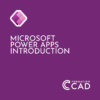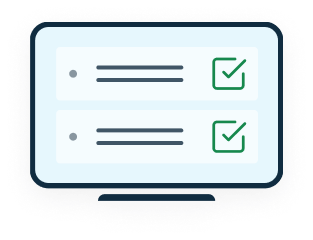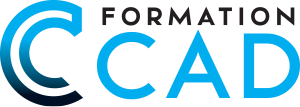Microsoft Power Apps Introduction
- Discover the Power Platform
- Manage connectors and integrations and control data sources
- Integrate artificial intelligence with copilot and AI Builder
- Discover Power Apps Canvas and create Model-Driven applications
- Hands-on workshop training
Our training options
Private
Remotely or at your office,
to suit your schedule
made-to-measure :
price per team

Chloé Bessette
Training Manager
- In online classes or at your office
- For a group/team from your company/organization
- Standard or custom-made syllabus
- Live, private Teacher
- Training manual and exercice files provided
- Official Attestation given after course completion
Microsoft Power Apps Introduction

Price per team
Demander une formation privée
Contact
We'll get back to you within one business day.
Prerequisites
- Have access to a Power Platform developer environment
- Understanding of the Office 365 ecosystem and applications
Module 1: Introduction to Power Apps
- Overview of the Power Platform
- Key products (Power Apps, Power Automate, Power BI, Power Pages)
- Complementary products (Connectors, AI builder, Dataverse, Power Fx, etc.)
- Added value to organizations
- Power Apps overview
- Who can use Power Apps?
- Power Apps app examples
- Features of Canvas Apps
- The characteristics of Model driven Apps
Module 2 : Gouvernance Power Platform
- Why implement Power Platform governance
- Pillars of good Power Platform governance
- Administration Power Platform
- Centre d’administration Power Platform
- Maker Portals (Power Apps maker, Power Automate maker, etc.)
- Power Platform environments
- Data Loss Prevention (DLP) Policies
- Operation
- Types of Strategies
- Types of policies
- Security Roles
- Users, teams
- Types de privileges
- Costs and licenses
Module 3: Connectors in Power Platform
- Definition
- Types of connectors
- Types of data sources
- Triggers and actions
- Custom Connectors
- Connectors and DLP
Module 4: Data Sources
- Dataverse
- What is Dataverse?
- Data structure in Dataverse
- Table Relationships
- Security in Dataverse
- Create business rules
- SharePoint in Power Apps
- Why combine Power Apps and SharePoint?
- How SharePoint and Power Apps work together
- SharePoint vs Dataverse
- Control and security
- Other data sources
- Business central and other source used by the organization
Module 5: Using AI in Power Apps
- Copilot: Generate an app per conversation
- AI Builder: Add AI to your apps and flows
Module 6 : Power Apps Canvas
- The Power Fx language and formulas
- The galleries
- Forms
- Other components and their properties
- Reusable components
- Connecting to other data sources
- Working with actions from different data sources
- Embed Power Automate flows into a Canva app
- Manage releases in Power Apps
- Publish and share a Canva app
Module 7 : Model Driven Apps
- Introduction aux Model driven Apps
- Components of Model driven applications
- Steps to Design a Model Driven App
- Business logic and business process flows
Workshop 1: Create a simple Canvas app that meets a specific need
- Ex: Expense management, inventory management, room reservation
Lab 2: Create an intermediate Canvas app that meets a specific need
- Ex: Purchase request management app (with approval), Training and certification management app
Workshop 3: Create a simple model-driven application that meets a specific need
- Ex: Contact management app, Case management app
Workshop 4: Create an intermediate model-driven application that meets a specific need
- Ex: Supplier contract management app
Questions & Answers
Microsoft Power Apps is a powerful tool that allows you to create professional applications without requiring in-depth development skills. Thanks to its ease of use, you can design custom applications that specifically meet the needs of your business. After completing the introductory training for Power Apps, you will be able to design mobile and web applications tailored to your business processes, even without being a developer. This platform is particularly well-suited for automating and simplifying workflows within your organization, providing custom solutions for specific tasks.
During the training, you will learn how to use the various features of Power Apps to create applications that integrate data from different sources, such as Microsoft 365, SharePoint, or even external databases. You will understand how to connect these data sources, display them in a simple and interactive interface, and even automate certain actions using “flows,” which are automated processes within the app.
You will also learn how to customize the application’s interface based on the needs of the end users, making the app intuitive and easy to use. Power Apps provides a visual environment that simplifies the creation of data entry screens, reports, and dashboards. By using components like buttons, forms, and dropdown lists, you can create interfaces that are tailored to your needs without writing a single line of code.
You will explore integrating your applications with other Microsoft tools, such as Power Automate, to automate repetitive tasks or complex processes. For example, you will be able to send automatic notifications, update databases, or synchronize information between different applications, all without manual intervention.
After completing this training, you will have the ability to deploy these applications within your business, making them accessible to your colleagues or partners while ensuring their security and confidentiality. You will also be able to manage access permissions, ensuring that only the right people have access to the right information.
Base
- Have access to a Power Platform developer environment
- Understanding of the Office 365 ecosystem and applications
- Understanding the Power Platform
- Governance control
- Connector Management and Integration
- Control of data sources
- Artificial Intelligence Integration
- Creating a Canvas app
- Creating Model-Driven Applications
- Practical expertise
Module 1: Introduction to Power Apps
- Overview of the Power Platform
- Key products (Power Apps, Power Automate, Power BI, Power Pages)
- Complementary products (Connectors, AI builder, Dataverse, Power Fx, etc.)
- Added value to organizations
- Power Apps overview
- Who can use Power Apps?
- Power Apps app examples
- Features of Canvas Apps
- The characteristics of Model driven Apps
Module 2 : Gouvernance Power Platform
- Why implement Power Platform governance
- Pillars of good Power Platform governance
- Administration Power Platform
- Centre d’administration Power Platform
- Maker Portals (Power Apps maker, Power Automate maker, etc.)
- Power Platform environments
- Data Loss Prevention (DLP) Policies
- Operation
- Types of Strategies
- Types of policies
- Security Roles
- Users, teams
- Types de privileges
- Costs and licenses
Module 3: Connectors in Power Platform
- Definition
- Types of connectors
- Types of data sources
- Triggers and actions
- Custom Connectors
- Connectors and DLP
Module 4: Data Sources
- Dataverse
- What is Dataverse?
- Data structure in Dataverse
- Table Relationships
- Security in Dataverse
- Create business rules
- SharePoint in Power Apps
- Why combine Power Apps and SharePoint?
- How SharePoint and Power Apps work together
- SharePoint vs Dataverse
- Control and security
- Other data sources
- Business central and other source used by the organization
Module 5: Using AI in Power Apps
- Copilot: Generate an app per conversation
- AI Builder: Add AI to your apps and flows
Module 6 : Power Apps Canvas
- The Power Fx language and formulas
- The galleries
- Forms
- Other components and their properties
- Reusable components
- Connecting to other data sources
- Working with actions from different data sources
- Embed Power Automate flows into a Canva app
- Manage releases in Power Apps
- Publish and share a Canva app
Module 7 : Model Driven Apps
- Introduction aux Model driven Apps
- Components of Model driven applications
- Steps to Design a Model Driven App
- Business logic and business process flows
Workshop 1: Create a simple Canvas app that meets a specific need
- Ex: Expense management, inventory management, room reservation
Lab 2: Create an intermediate Canvas app that meets a specific need
- Ex: Purchase request management app (with approval), Training and certification management app
Workshop 3: Create a simple model-driven application that meets a specific need
- Ex: Contact management app, Case management app
Workshop 4: Create an intermediate model-driven application that meets a specific need
- Ex: Supplier contract management app
Questions & Answers
Need to assess your level?
Select the right course for you using the Formation CAD Auto-Assessment tool

